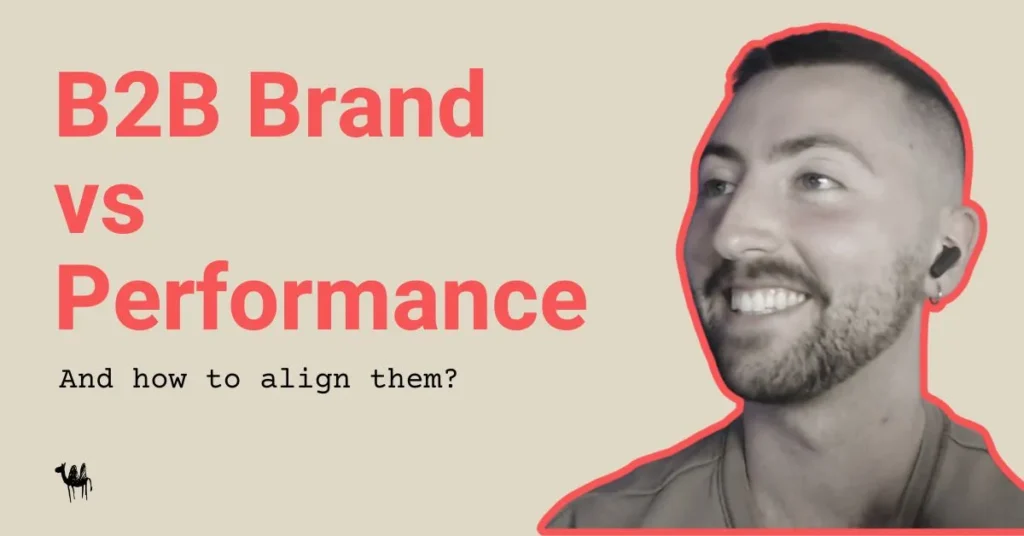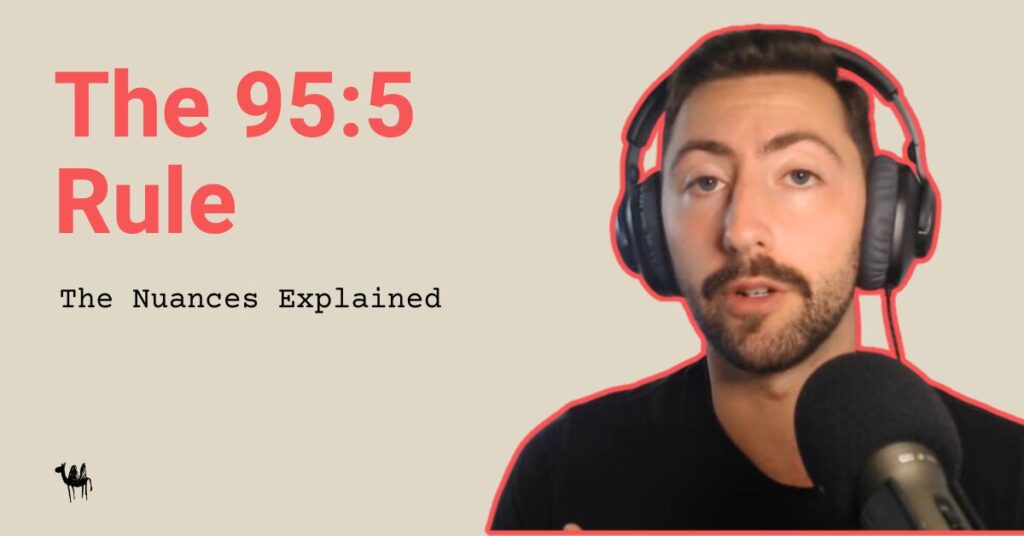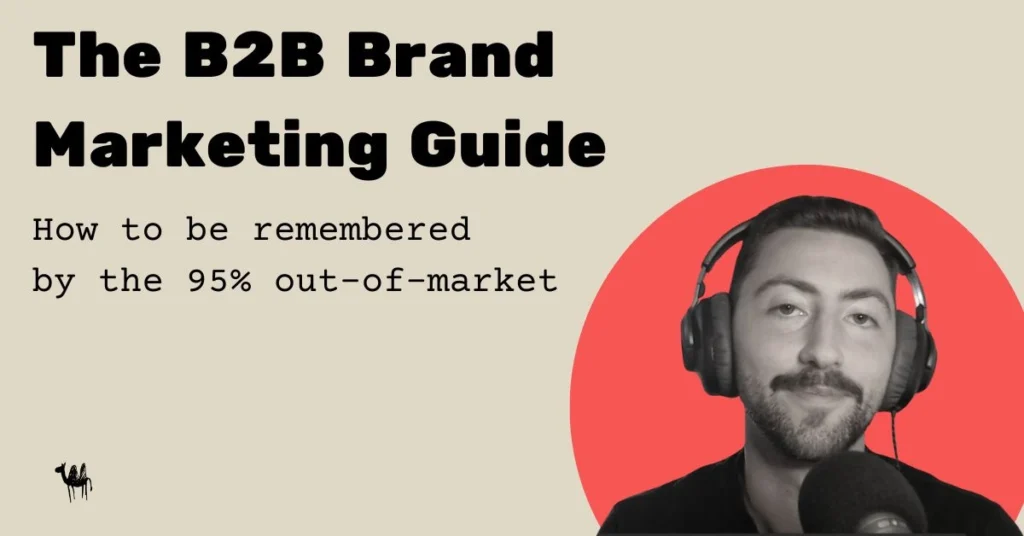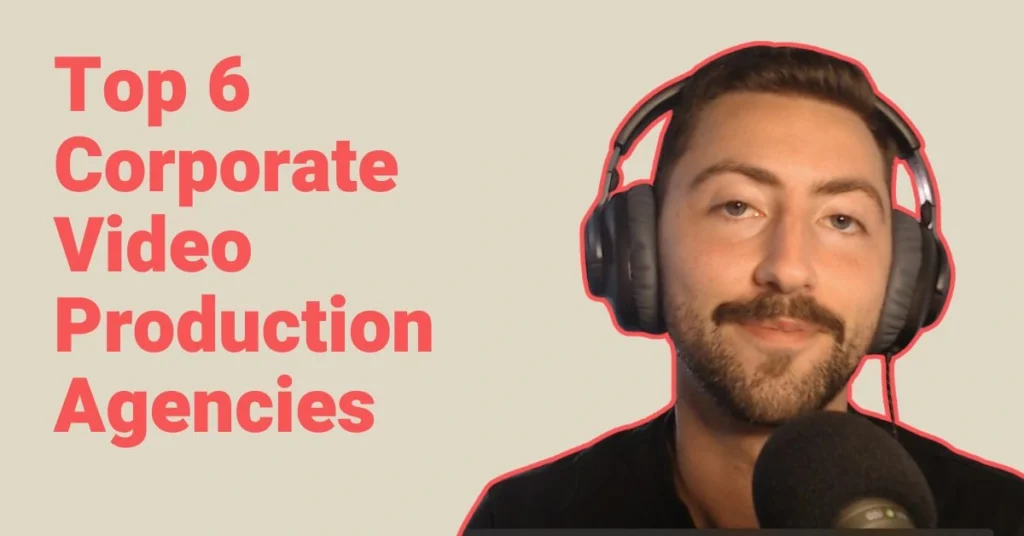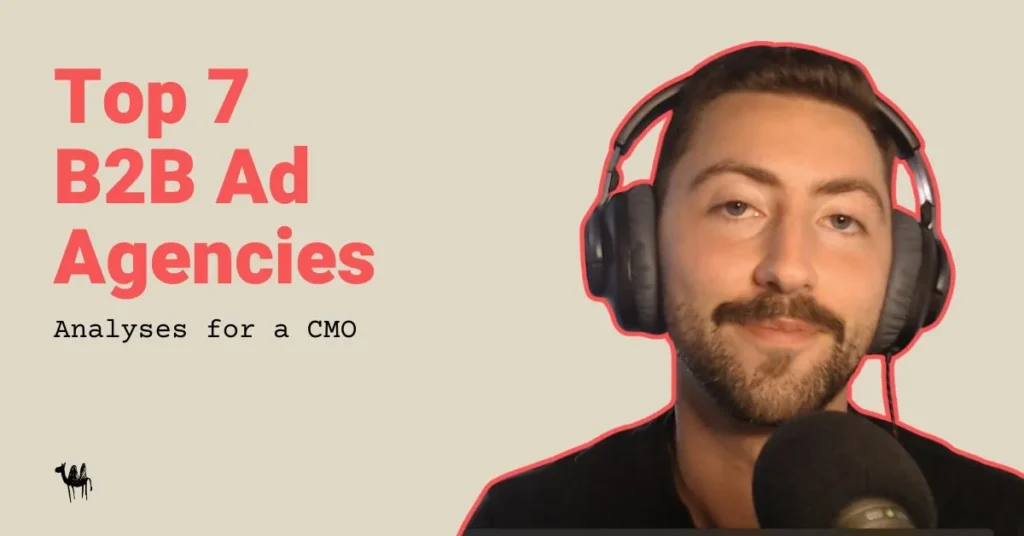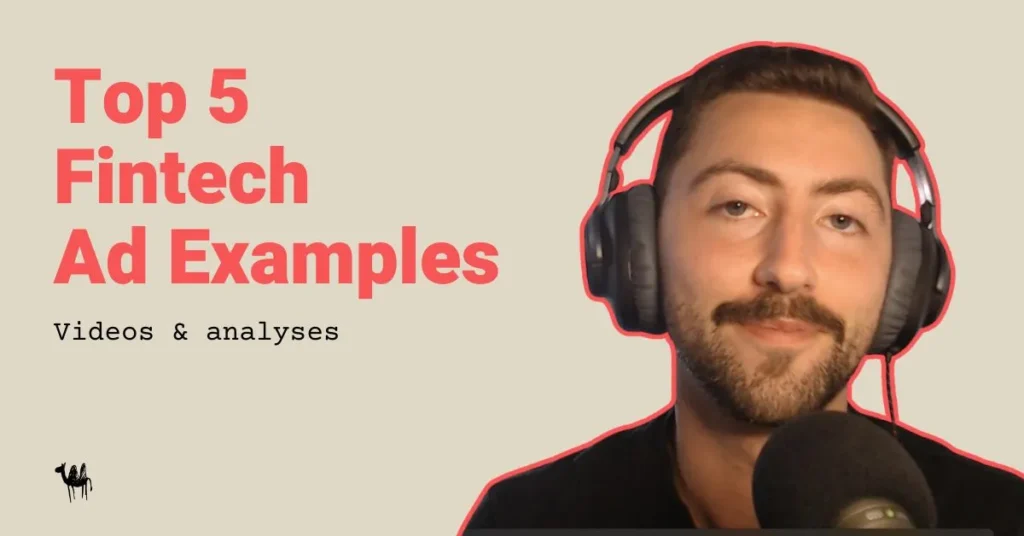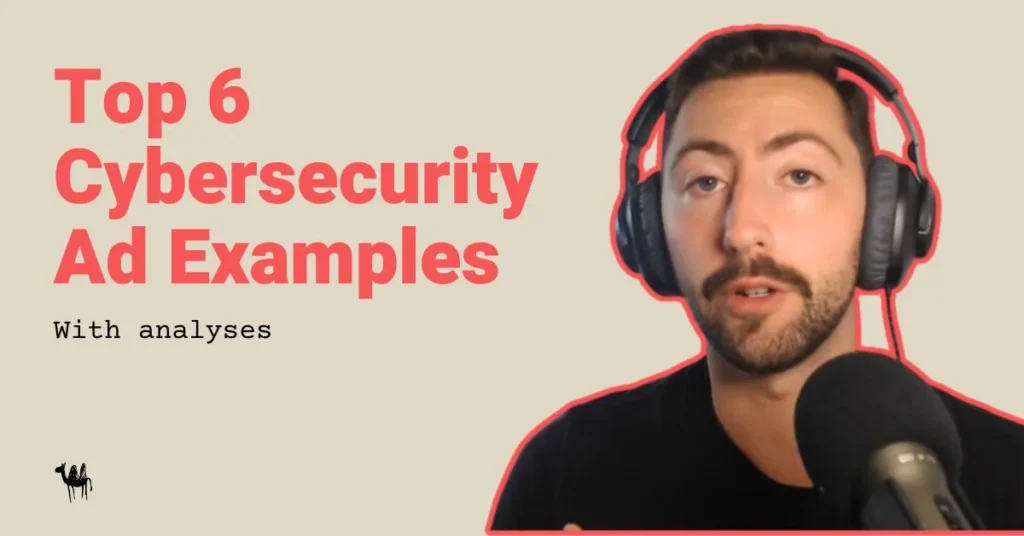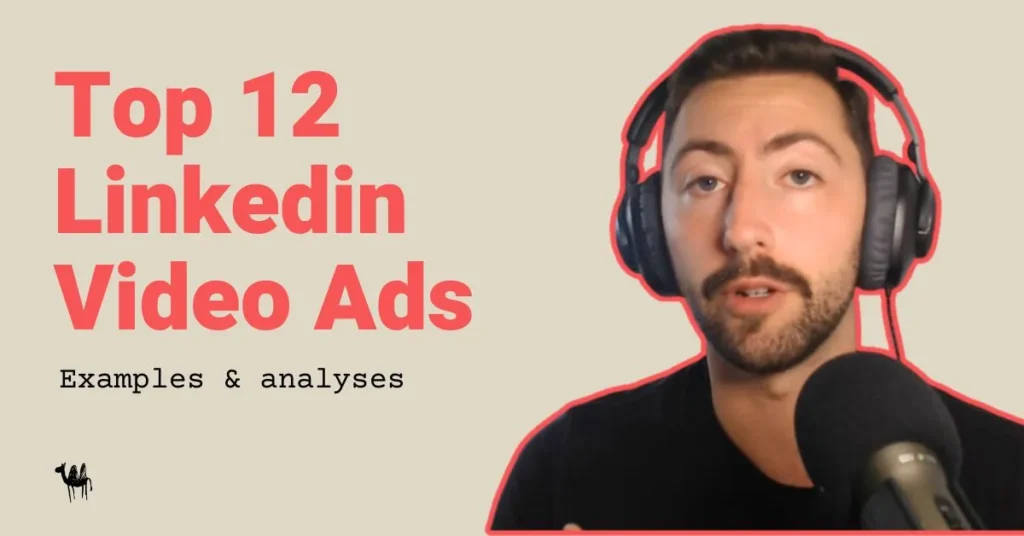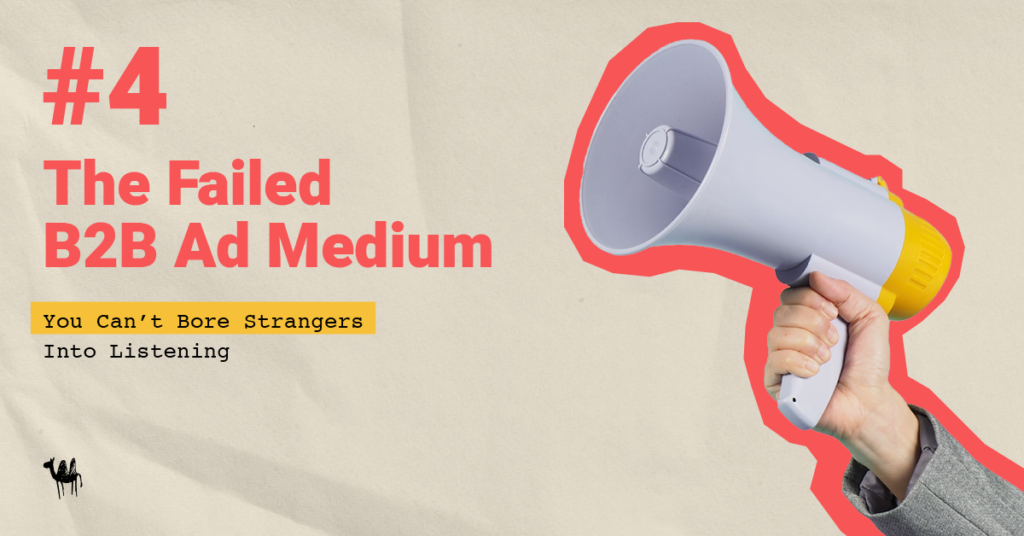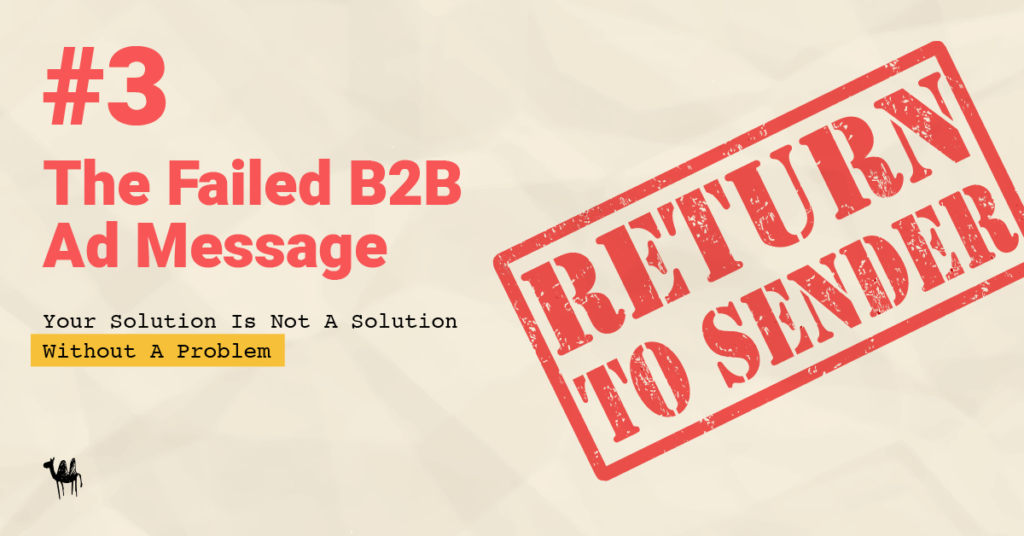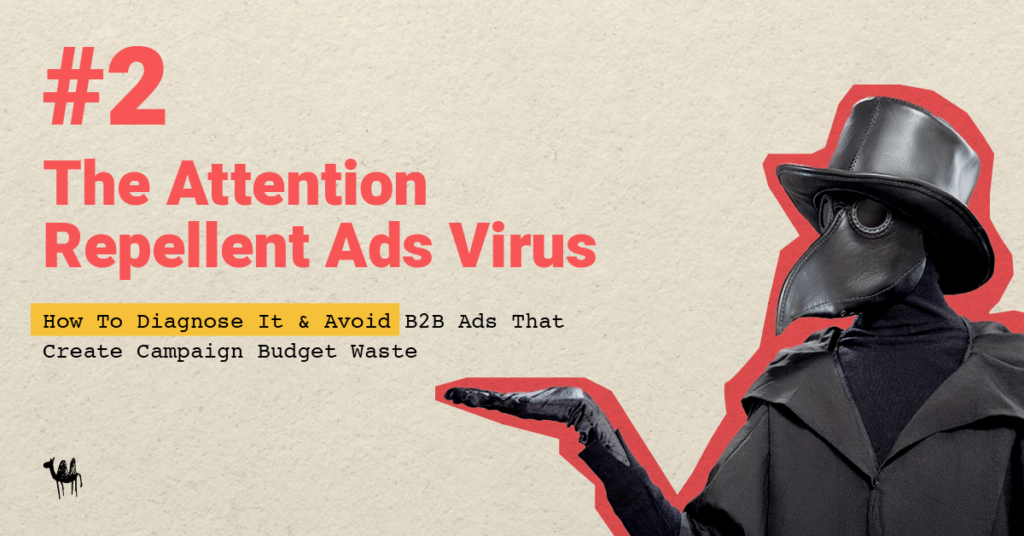Each of our Problemotional Advertising articles are written in a sequence. We strongly recommend reading them from Article 1 to the most recently published. This will ensure you understand everything you need to create a profitable and scalable B2B advertising campaign and avoid wasting hundreds of thousands of dollars.
Disclaimer: If you believe that B2B should be mind-numbingly boring and painful, you will experience extreme discomfort by reading the following article. Continue at your own risk.
Written by Dylan Ciaccio and Regan George
Dear CMO…
B2B advertising has a massive problem.
And if the problem is left unsolved in your advertising campaign, you’ll face Ad Budget Waste – spending money on ads that aren’t maximizing the ROI.
At the ad level, it results in:
→ Lower click thru rate
→ Higher cost per impression
→ Higher cost per click
At the campaign level, it results in:
→ fewer high intent and qualified inbound calls
→ lower win rate
→ longer sales cycles
All of which leads to higher customer acquisition costs and Ad Budget Waste.
These are all very common symptoms of the problem.
This problem is why your ‘leads’ (if you can call them that) don’t have any intent to buy.
It’s why you’re seen as just another of the same thing in your category.
It’s why buyers feel no urgency and reschedule sales calls.
It’s why sales teams close on average 1 out of 1,000 “leads” from a LinkedIn lead gen campaign.
It’s why only 11% of B2B organizations are satisfied with their current PR and marketing agencies.
So, what’s the problem?
Most B2B companies use Attention Repellent Ads in their Top of Funnel, causing their campaigns to be ignored. And because most of the could-be buyers ignore your ads, you end up with Ad Budget Waste.
What’s an Attention Repellent Ad (AR Ad)? Exactly what the word says.
An advertisement that not only doesn’t attract attention, it actually repels it. It sends people in the opposite direction. People aren’t just indifferent to your ads. They actually perceive them and your company negatively. Your ads are like fingernails scratching a chalkboard.
And when your ads don’t attract attention nor keep it, it doesn’t matter:
👉 how valuable your service/product is
👉 how amazing your offer is
👉 or that you’ve invented something completely new and groundbreaking
That’s because in marketing, the reality doesn’t matter, only the perceived reality matters. Attention is the first step to changing someone’s perception, initiating their buying journey.
Attention is the first step that can’t be skipped.
Advertising is a battle for perception. But perception can’t be changed if no one is paying attention.
Welcome to Ignoredville: the #1 destination for advertisements that no one sees or remembers. The town square is packed with flyers and posters, fluttering in the breeze, each one a desperate plea for attention that never comes. The digital screens flash and dance, but they’re just background noise to the bustling crowds.
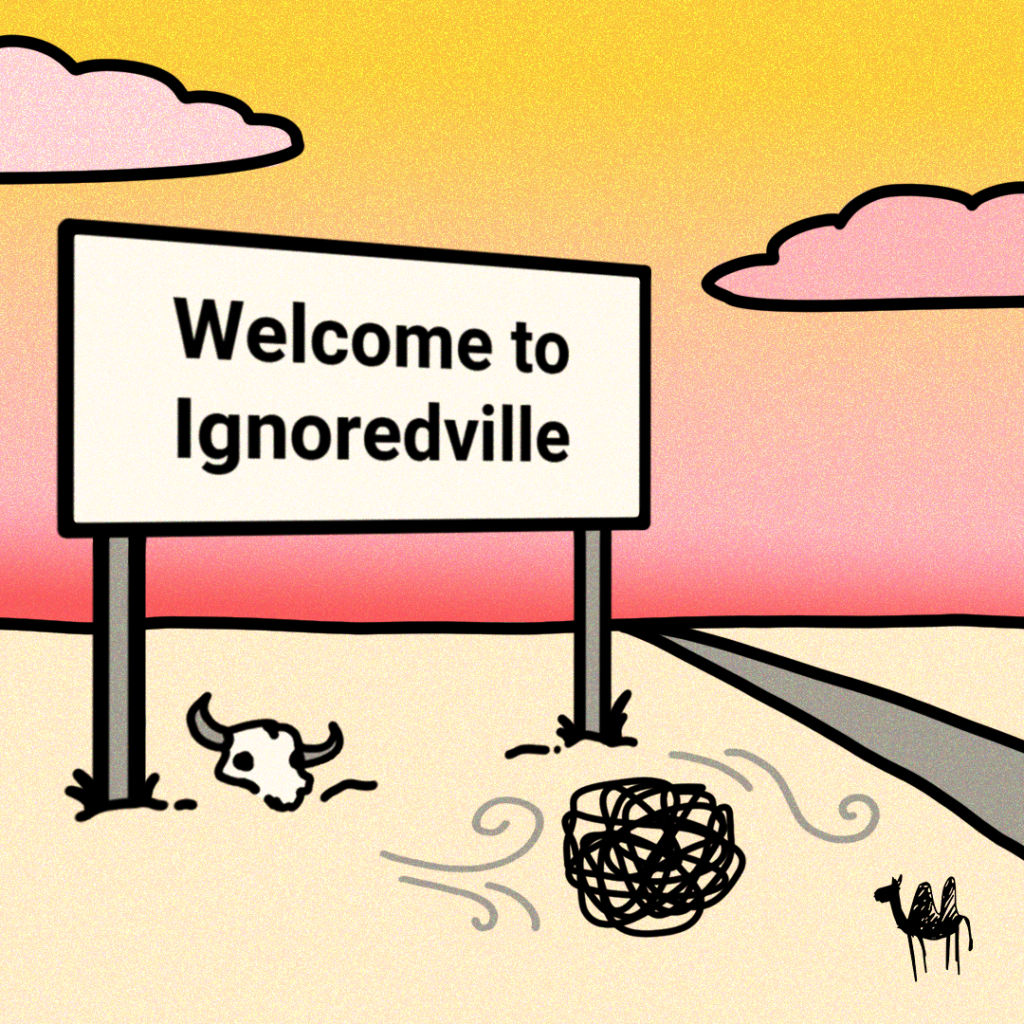
The way that Attention Repellent Ads get you sent to Ignoredville happens in 2 ways:
- Your ads are too mind-numbingly emotionless to be consumed (and remembered) or
- Your ads market the ‘solution’ before marketing the problem
The reason AR Ads are problematic is that they’re missing Buying Journey Alignment.
From our research on the B2B buying journey, the first message buyers should see is about the problem and it should be communicated in an emotional way. Later on in the journey, it should become more solution-focused and communicated in a rational way.
An easy way to remember this:
- The ad message changes along with buyers’ awareness: from problem-focused to solution-focused.
- The ad medium changes along with buyers’ decision-making: from emotional to rational.
To be clear:
Ads that market the solution in a rational way are not the problem itself. It only becomes problematic when these types of ads are used in the Top of Funnel (ToFu). ToFu ads, instead, need to market the problem in an emotional way.
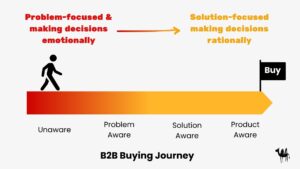
Before I explain:
→ what Attention Repellent Ads look like
→ how they’ll waste you hundreds of thousands of $$$
→ and how they’ll get you fired from your CMO position
….You first have to understand why….
Advertising of 2024 is Nothing like Advertising of The Past.
Let’s rewind to 1980.
The godfathers of positioning, Al Ries and Jack Trout, published their book called, Positioning: The Battle For Your Mind. They studied hundreds of businesses and their products, why some succeeded and most failed. Through their studies, they recognized a new phenomenon in the 70’s that didn’t exist in the 50’s and 60’s.
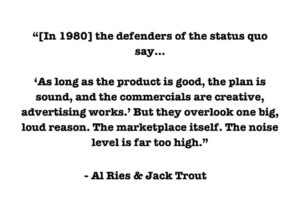
Modern buyers suffer from Ad Overload.
They realized, thanks to technological advancements, people were being bombarded with more advertisements than ever. They had new access to huge amounts of information. Thousands of new businesses were popping up, all making the same promises.
This was a change they recognized in 1980.
That’s 44 years ago…
BEFORE the immense amounts of information, ads, and choices that we now suffer from thanks to social media and the internet. Since they first discovered it, this problem has grown and continues to grow.
In 2007, the average American was seeing 5,000 ads a day. Today, we’re seeing 10,000 ads a day (in the looser sense of the word, anything trying to sell us something). The number is growing.
Social ads, content, Google Ads, signs, emails, etc. All fighting for our attention. There are so many different options of products and services that it is impossible for the human mind to distinguish the differences between them.
And as a result, the human brain does 2 things:
- ignore the high majority
- clump the rest together into categories where the brands are seen as Interchangeable, which are then also ignored
In other words, an extremely miniscule number of ads are:
- consumed
- remembered
- and influence buying behavior
So unless your B2B ad campaign is adapted to Ad Overload, it will fail. And you’ll lose your company thousands of dollars. Have fun explaining that to your CFO. So how do you create a B2B ad campaign adapted to Ad Overload and ensure it achieves Buying Journey Alignment?
You avoid the following 2 traps that result in Attention Repellent Ads.
The Professional Image Trap
The first root cause of Attention Repellent Ads is from most B2B companies attempting to maintain a Professional Image in everything they do.
They believe that failing to do so will result in buyers no longer trusting them. After all, people don’t buy without trust. Especially in B2B. The intention of this way of thinking is good. But the end result is not.
Your company wants a Professional Image because you want to show that you take things seriously; you care about what you do and you care about your customers. The problem, however, is that when you prioritize your Professional Image in Advertising, it often becomes the fastest way to being Ignored.
It’s not that having a Professional Image is wrong. It’s that this often translates to 1) doing emotionless boring shit and 2) making it about you, not the buyers.
You start with the intention of caring for your customers but end up only caring about yourself.
“We need to communicate that we stand for quality, excellence, and greatness. Because when buyers see that in everything we do, they trust us.” As if there are companies that stand for defectiveness, inferiority, and insignificance…
It’s why:
→ The images on B2B ads and websites are all stock photos of people in suits drinking coffee, smiling, and shaking hands having a “jolly good time”
→ Companies use professional language that means absolute jack-shit (cutting-edge, state-of-the-art, world-class blah blah blah)

Slap your logo on this bad boy and you’ll look like any other B2B company’s ads. Cheers to fitting in and getting ignored!
The obsession with a Professional Image has resulted in everything becoming emotionless.
Your boring ads are scrolled past.
Your webinars are mind-numbing.
Your ebooks send people to the eye doctor.
Your website and landing pages have a bounce rate higher than a bouncy house.
Without emotion, your ads will not be:
- consumed
- remembered
- nor influential in buying behavior
Whether we like it or not, B2B buyers are emotional human beings.
Our advertising message will make 0 impact if it is not communicated with emotions in mind.
In an analysis of the IPA dataBANK, which contains 1,400 case studies of successful advertising campaigns, campaigns with purely emotional content performed about twice as well (31% vs. 16%) as those with only rational content.
Emotional content generated 23% more shares on social media compared to purely rational content.
Highly emotive ads are 3x more likely to be remembered than ads with a weak emotional response.
“This sounds good and all. But surely you can’t sell a $500k service with purely emotional content.”
If this thought crossed your mind, you’re absolutely right. The buying journey starts emotionally and gradually becomes more rational.
That’s because the buying journey starts with capturing attention and being remembered. Emotion does this best. But the buying journey ends with thoughtful decision making, which is what logic does best.
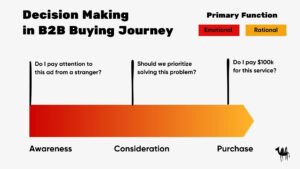
Conclusion: To avoid the Professional Image Trap, you must use ToF ads that communicate the message in an emotional way.
But here’s the thing.
You could score a 10/10 in emotional communication for your ads. Consumed and remembered forever. But if the message that you’re communicating isn’t right, the rest of the entire funnel results in huge Ad Budget Waste.
That’s because the message is the main factor in changing perception and influencing buying behavior.
The high majority of B2B Top of Funnel ads has the wrong message.
The Solution Promotion Trap
The second root cause of Attention Repellent Ads is by making your ‘solution’ the main message of your Top of Funnel Ads, before making them problem aware and/or the problem highly visible.
There’s a large number of businesspeople that believe people buy brands. They give credit to ‘the brand’ for huge business success.
They say consumers buy Google because of the Google brand.
They say consumers buy Volkswagen because of the Volkswagen brand.
They say consumers buy Red Bull because of the Red Bull brand.
They say consumers buy ‘us’ and ‘who we are’. (As if they care about us, a group of complete strangers…)
If this was the case, why was Google+ such a huge failure?
Why were Volkswagen Vanagon and Sirocco failures?
Why was Red Bull Cola a failure?
These are all some of the ‘strongest’ brands in the world. If buyers bought because of the brand, these would have all been a success. Or at least, it wouldn’t have resulted in billions of wasted dollars like it did.
Christopher Lochhead (the godfather of Category Design) calls this misled obsession the Big Brand Lie.
Al Ries and Jack Trout (the godfathers of Positioning) call putting a brand name on every new product the Line Extension Trap.
B2B marketers that make the brand or service the focus of their Top of Funnel message is what we call the Solution Promotion Trap. These marketers have overlooked one cold hard piece of economic truth. They often describe and promote a brand as a solution. But here’s the thing…
People don’t buy solutions without first having a problem.
Buyers don’t care about us. They care about themselves and their problems.
And in each of the failure examples from above, they marketed their brand.
They made the brand the main focus of the message. And it turned out that no one gave two shits.
Because no one buys a brand.
What they buy is the solution to a problem marketed by a brand. The reason each of those companies were initially successful was because they were the first to evangelize a unique problem and make buyers aware of it. By doing so, they became the obvious solution (and brand) in the mind of buyers.
That’s because:
Brands and services are about us. Problems are about them.
When we say:
- “We’re the best cybersecurity platform!”
- “We’re experts. Believe us.”
- “We care about you. Buy our service!”
No one believes you and no one cares. Because they think you’re just trying to sell to them.
When we make the message about their painful problem, we are showing them we care and that we want to help them solve that problem. And consequently, they care, too.
Falling into the Solution Promotion Trap is why:
1) You aren’t trusted
→ Buyers say, ”You just want my money. I don’t trust you.”
The outcome = ignored
2) Your service/brand is perceived as Interchangeable
→ Buyers say, “There’s 100 other similar services that all make the same generic promises. I could probably get that somewhere else.”
The outcome = ignored, few inbound calls, low close rate, and low LTV
3) Your service/brand is perceived as a Nice-To-Have, not a Need-To-Have.
→ Buyers say, “I can see how that might help. But I have limited time and more pressing matters.”
The outcome = ignored, few inbound calls, low close rate, and long sales cycles
Conclusion: To avoid the Solution Promotion Trap, you must use ToF ads that focus on the painful problem for the message.
So if the brand isn’t what the brand marketers claim it is, what’s the point of the brand?
Your brand is simply the name they remember in relation to the problem.
You didn’t buy Slack because it shoved its logo in your face to create ‘brand awareness’. You bought it because it was the brand that made you aware of the problem: your company’s communication was fragmented. Slack’s app of communication channels and workspaces became the only obvious solution to the problem.
You didn’t buy Salesforce because it was just ‘top of mind.’ You bought it because it was the brand that made everyone aware of the problem: CRM that is on-premise is a huge hassle, inflexible, and expensive. Salesforce’s cloud-based CRM became the only obvious solution to the problem.
You didn’t buy Loom because it was a video tool. You bought it because it was the brand that made you aware of the problem: communicating through meetings results in tons of wasted time. Loom’s video messaging for work became the only obvious solution to the problem.
When you own the problem in the buyer’s mind, you become perceived as the Irreplaceable Need-To-Have solution.
This is the reason Problemotional Advertising exists: B2B advertising that markets the painful problem in an emotional way in the beginning of the buyer journey.
Advertising that isn’t sent to Ignoredville.
Advertising based on psychology.
Advertising that gets your brand remembered in relation to the problem.
Advertising that achieves Buyer Journey Alignment.
Advertising that differentiates your brand in a crowded category.
Advertising that makes buyers say, “I need that.”
Advertising that attracts buyers in the short-term and the long-term.
Advertising that results in Ad Campaign Success – profitable and scalable growth.
If you have fallen into the 1) Professional Image Trap and the 2) Solution Promotion Trap, you likely have Attention Repellent Ads.
How do you know for sure if you’re using Attention Repellent Ads? How do you visibly distinguish them from Problemotional Ads?
In Article 2, we analyze various examples of both types of ads to help you identify what to avoid if you’re currently in Ignoredville, experiencing Ad Budget Waste.
Click to it below.

